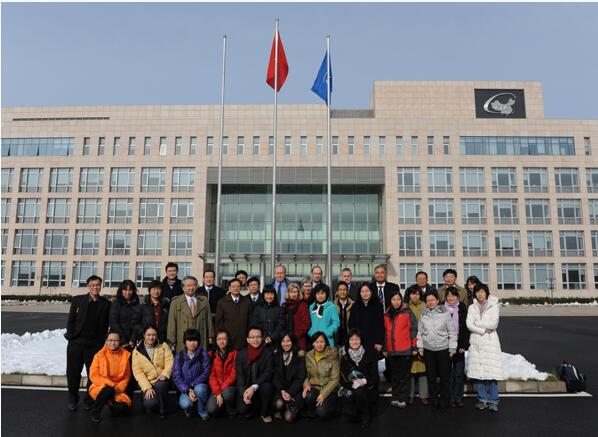News of CNIC
China's new WHO flu monitoring center seeks to reverse criticism
Article source: Date time:2011-05-09
BEIJING — China has not always been a world leader when it comes to infectious disease surveillance. Severe acute respiratory syndrome caught the country by surprise in 2003, and, two years later, government officials went into denial after reports surfaced that H5N1 avian influenza had infected people and birds. But since those debacles, China has ramped up its screening efforts, building several infectious-disease institutes and more than 400 labs devoted to flu surveillance and testing, plus adding sentinel equipment to some 550 hospitals. So when H1N1 'swine flu' struck four years later, the world's most populous country was much better prepared.

Flu-ent Chinese: The National Influenza Center.
"China has set up the world's largest influenza surveillance network," Yuelong Shu, director of the National Influenza Center, part of the Chinese Center for Disease Control and Prevention (CDC), told Nature Medicine. And now, China can also boast being the first country in the developing world to host a World Health Organization (WHO) Collaborating Center for Reference and Research on Influenza.
Joining other collaborating centers in Australia, Japan, the UK and the US, the Beijingbased National Influenza Center will serve as a regional hub for monitoring and responding to flu outbreaks. The Chinese center will also host research into new antiviral medicines and help provide pandemic preparedness training for medical personnel from across East Asia.
"This designation reflects the country's exceptional contribution to the global fight against influenza,” Young-soo Shin, the WHO's regional director for the western Pacific, said at a designation ceremony here on 14 March, the state-owned China Daily newspaper reported.
China's surveillance efforts weren't always so laudable. Just five years ago, the country's lack of transparency and preparedness in dealing with the avian flu crisis drew sharp criticisms from WHO officials. “But the situation has improved dramatically in recent years," says Qiyong Liu, an infectious disease expert at the Chinese CDC's National Institute for Communicable Disease Control and Prevention. "Now China is quite open to the outside.”
On a domestic level, Liu also thinks that the National Influenza Center's status as a WHO organ—complete with data sharing between the five global centers—will promote a spirit of greater cooperation among the Chinese research community. "The reference center will help Chinese institutions and pharmaceutical companies get influenza viral strains and other data more quickly and more comprehensively, facilitating their work to develop vaccines and therapies against particular viral strains," he says.
Even so, gaps still remain in China's monitoring. According to a recent report by leading officials at the Chinese CDC and its US counterpart, China still needs to invest more in pathogen-based surveillance systems such as the US CDC's PulseNet to contain outbreaks before they cause substantial illness and death (Health Aff. 30, 127–135, 2011). “The clinical hospitals should work together with our CDC system to isolate and identify new pathogenic strains that could cause new epidemics," says study coauthor Zijian Feng, director of the Office of Disease Control and Emergency Response at the Chinese CDC. "We are proposing epidemic and public health policy revisions to promote and support this development."

